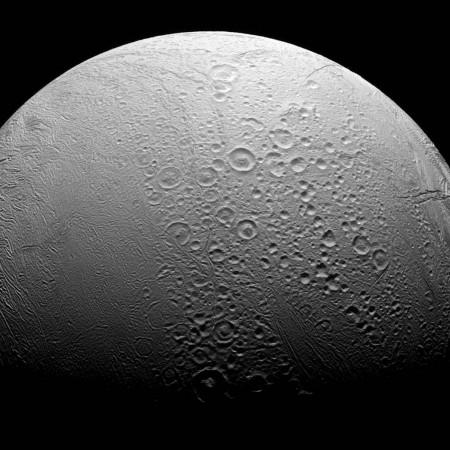
Saturn's sixth-largest moon, Enceladus, has just thrown up a very interesting find. Scientists made th discovery when they were analysing data received from the moon via NASA's Cassini spacecraft.
Scientists found that the northern part of the moon had suffered numerous impacts in the past, whereas the southern part showed a far smoother surface which, usually the outcome of intense geological activity.
Also Read: Mars could have been more habitable than we previously believed! [VIDEO]
What scientists found has gone some way to prove the influence geological activity can have on the surface of a celestial body, such as a moon or planet.
The 'smoothening' of a moon's surface may also lead researchers to believe that the object is a lot younger than it actually is.
This image, the anti-Saturn hemisphere of Enceladus, captured by Cassini on November 27, 2016, from a distance of around 66,000 kilometers (41,000 miles), uses an image scale of 398 meters (1,310 feet) per pixel, a NASA statement revealed.
Cassini also explored Enceladus' salty ocean and also revealed that the moon was in fact the most reflective celestial body in our solar system.
The Cassini mission was launched on October 15, 1997. The project is a collaboration between NASA, the European Space Agency (ESA) and the Italian Space Agency.
The two onboard cameras are devised and developed at the Jet Propulsion Laboratory (JPL), with the imaging operations center located at the Space Science Institute in Boulder, Colorado.





!['Lip lock, pressure, pyaar': Vidya Balan- Pratik Gandhi shine in non-judgmental infidelity romcom Do Aur Do Pyaar [ Review]](https://data1.ibtimes.co.in/en/full/797104/lip-lock-pressure-pyaar-vidya-balan-pratik-gandhi-shine-non-judgmental-infidelity-romcom.jpg?w=220&h=138)







